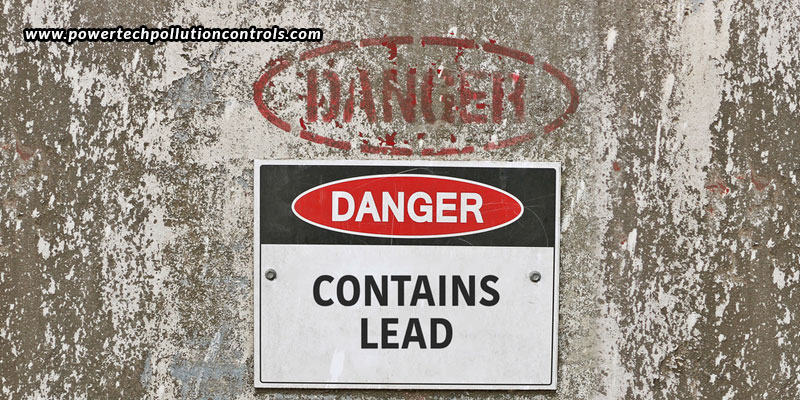When lead, a toxic heavy metal, is present in the environment at concentrations that could be detrimental to people, animals, and ecosystems, it results in a severe environmental and health concern. There are many ways that lead can enter the environment, including industrial processes, lead-based paints, contaminated soil, and old water pipes. Here are some crucial details regarding lead contamination.

Health risks from lead contamination
Lead exposure can have a negative impact on a person’s health, especially in young children and pregnant women. Even at low concentrations, lead exposure can harm internal systems including the kidneys, liver, and nervous system and result in developmental delays, learning difficulties, impaired cognitive function, behavioural issues, and more. Exposure to lead in adults can result in neurological abnormalities, high blood pressure, and problems during pregnancy.
Sources of lead contamination
- Lead-based paint – The Indian government passed regulations in 2016 that set a 90 parts per million limit for lead levels in paints. However, there are still issues with adoption, particularly in small and medium-sized businesses. Additionally, lead-based paint in older structures may crack or degrade over time, generating lead flakes and dust.
- Industrial activities – A number of businesses, including mining, smelting, battery production, and lead-acid battery recycling, have the potential to leak lead particles and contaminate the soil, air, and water around them.
- Soil contamination – Lead contamination in the soil, particularly in metropolitan areas or close to industrial locations, can be caused by lead-based paint, industrial pollutants, or previous use of lead petrol.
- Water pipes – When the water has corrosive qualities, old plumbing systems with lead pipes or fixtures can contaminate drinking water.
Prevention and remedies for lead contamination
- Following the regulations – To address lead contamination, many nations have put legislation in place. These rules could include limitations on the use of lead in consumer goods, recommendations for safely removing lead paint, and specifications for lead levels in drinking water. It’s crucial to get advice from regional health authorities, environmental organizations, or lead remediation specialists to comprehend and follow any applicable rules and laws in your city or state.
- Personal Protective Equipment – You must make sure that any employees who might come into contact with lead are wearing proper personal protective equipment, such as gloves, coveralls, respirators, and safety glasses. The level of exposure and particular requirements should be taken into consideration while choosing any such equipment.
- Wet cleaning methods – It is essential to use moist cleaning techniques like wet mopping, wet cloth cleaning, and vacuuming in order to collect and remove lead dust.
- Regular cleaning and maintenance – Routine cleaning and maintenance procedures can guarantee that lead-contaminated surfaces, equipment, and ventilation systems are cleaned and maintained appropriately, thus lessening the chances of lead dust building up and spreading.
- Engineering controls – It is essential to put in place engineering controls to reduce lead dust production in the first place. This can involve dust collection systems, local exhaust ventilation systems, or lead-containing material containment enclosures.
Oil Mist Collector – For businesses that have contamination problems as a result of metal production procedures for lead goods and components, installing a mist collector may prove to be a wise decision. With the help of their hoods and duct systems, these collectors can filter and get rid of harmful lead oil mists. The Mistkiller from Powertech Pollution Controls is a high-efficiency centrifugal working oil mist collector that preserves a healthy environment by capturing and regulating most types of mist.
For more information, visit: https://www.powertechpollutioncontrols.com/